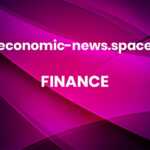Unlock the White House Watch newsletter for free
Your guide to what the 2024 US election means for Washington and the world
Donald Trump’s chaotic trade policy can only lead to economic chaos. So, might the Trump administration stumble upon something both more coherent and less damaging, yet still meet the president’s protectionist aims? Perhaps. Some members, including Scott Bessent, Treasury secretary, and Stephen Miran, chair of the Council of Economic Advisers, believe so.
If one is to understand this more sophisticated approach, one should read Miran’s “A User’s Guide to Restructuring the Global Trading System”, published in November 2024. The author states that “this essay is not policy advocacy”. But if it quacks like a duck, it is a duck. From a man in his current position, this must now be read as advocacy.
Underpinning Miran’s argument is a proposition made by the Belgian economist Robert Triffin in the early 1960s. Triffin argued that the growing demand for dollars as a reserve asset could only be supplied by persistent US current account deficits. This in turn meant that the dollar was persistently overvalued relative to the requirements of equilibrium in the balance of payments.
Over time, he argued, this weak trade performance would undermine confidence in the fixed dollar price of gold. So, indeed, it proved. In August 1971, in response to a run on the dollar, President Richard Nixon suspended gold convertibility. After hard bargaining, an agreement was reached on new sets of parities of the dollar against other major currencies. These did not last. Soon, these new parities collapsed. The old Bretton Woods system of fixed, but adjustable, exchange rates was replaced by today’s floating exchange rates.
Miran applies this perspective to the current predicament of the US. That is why one should view what happened in the 1960s and 1970s as a better parallel to what is being discussed today than the Plaza and Louvre Accords of the 1980s. The latter were aimed at managing a floating exchange rate regime at a time of disequilibrium among the dollar and other currencies, especially the Japanese yen and German mark. What is proposed now is recreating a global system of exchange rate management.
The justification for this, argues Miran, is that, as in the 1960s, the desire of most other countries to hold the dollar as a reserve currency is driving up its value and so opening a huge current account deficit. This squeezes output of tradeable goods, notably manufactures. That creates a trade-off for the US between possibilities for cheaper finance and international leverage, on the one hand, and the social and fundamental security costs of a weaker manufacturing sector, on the other. Yet Trump wants both to protect domestic manufacturing and maintain the dollar’s global role. Thus, policy has to achieve both aims.
One possibility might be unilateral action by the US to weaken the dollar. An option here would be fiscal tightening combined with a monetary loosening. But that would get in the way of Trump’s desire to extend his 2017 tax cuts. Another possibility would be to force the Federal Reserve to drive down the dollar. But that might have devastating effects on inflation and the dollar, as happened in the 1970s.
Yet another possibility would be tariffs alone. But, other things equal, that would lead to appreciation of the dollar, which would damage the US export sector. Therefore, implies Miran, tariffs should also be used as a weapon in bargaining for a global deal or, if deemed necessary, be complemented by such a deal.
Thus, the aim of a stronger manufacturing sector, to be delivered by a combination of tariffs and a weak dollar, needs global co-operation. My colleague, Gillian Tett, has described possible details of such a “Mar-a-Lago accord”.
It has two key aspects. The economic aspect is to release the constraints discussed above. The way to do so, suggests Miran, is to turn short-term borrowing into ultra-long-term borrowing, by “persuading” foreign holders to switch their holdings into perpetual dollar bonds. This would allow the US greater room to pursue its desired combination of loose fiscal and loose monetary policy. The political aspect is to point out that accepting such a deal would be the price of being viewed as a friend. Otherwise, a country would be viewed as a foe, or at best as floating in between. In a precise sense, this might be viewed as a “protection racket”.
This proposal raises four questions.
The first is whether Miran’s analysis of the links between the dollar’s role as a reserve currency, the chronic US current account deficit and the weakness of manufacturing employment and output is correct. One must doubt it, because the US is far from the only high-income country with falling shares of employment in manufacturing.
A second is whether the proposed new currency accord would in fact allow the US to combine issuance of a reserve currency with its sectoral aims better than any plausible alternatives.
A third is whether there is any likelihood of agreement with Trump on the complex set of objectives and instruments in this proposal.
A final question is whether Trump is capable of sticking to any deal he has reached. He has, after all, abandoned Ukraine, put the commitment to Nato into doubt and mounted an assault on Canada.
The last two points are evidently the most important. Is this administration capable of making a deal any sane person or country should trust? I think not. Yet the analysis of the economic aspects is also important. I plan to look at these next week.
Follow Martin Wolf with myFT and on X


